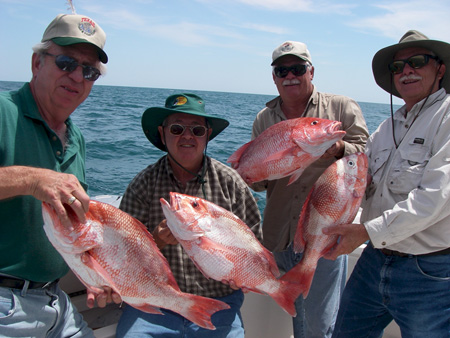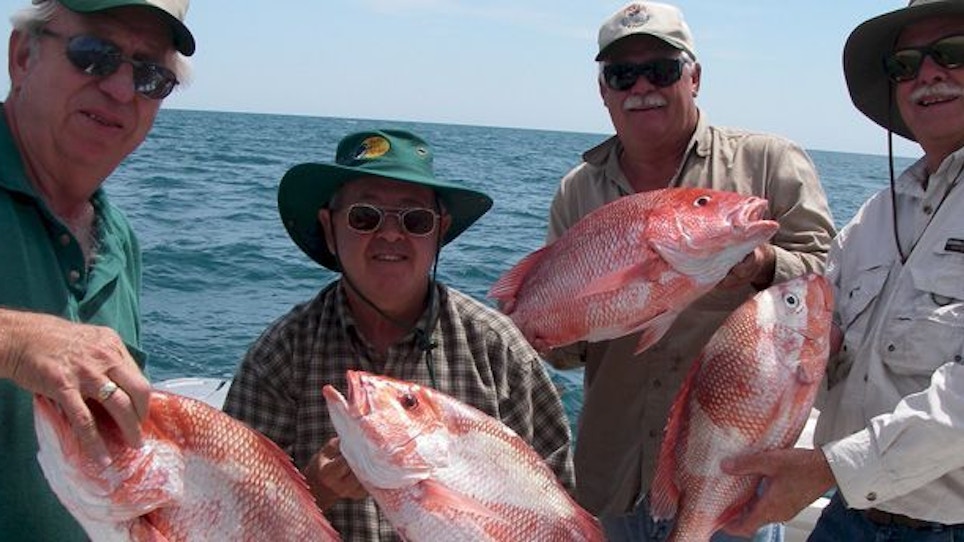 Orlando, Florida — The South Atlantic Fishery Management Council voted 9 to 4 Wednesday morning to approve a red snapper fishing moratorium. The closure affects 4,827 square miles of ocean off Florida and Georgia coasts to fishing at depths from 98 to 240 feet. The size of the ocean closure was reduced by the SAMC, and the majority of the closure will be off Florida’s coast, where more red snapper are caught accidentally when fishermen target other deep-dwelling species. The mortality rate of these fish increase when released due to barotrauma attained from not allowing these fish time to decompress as they are reeled from the bottom. The overall red snapper fishing moratorium affects federal waters from North Carolina to the east coast of Florida and extends the current one-year moratorium, which expires December 5.
Orlando, Florida — The South Atlantic Fishery Management Council voted 9 to 4 Wednesday morning to approve a red snapper fishing moratorium. The closure affects 4,827 square miles of ocean off Florida and Georgia coasts to fishing at depths from 98 to 240 feet. The size of the ocean closure was reduced by the SAMC, and the majority of the closure will be off Florida’s coast, where more red snapper are caught accidentally when fishermen target other deep-dwelling species. The mortality rate of these fish increase when released due to barotrauma attained from not allowing these fish time to decompress as they are reeled from the bottom. The overall red snapper fishing moratorium affects federal waters from North Carolina to the east coast of Florida and extends the current one-year moratorium, which expires December 5.
The 4,827 closure was the most liberal suggested, with George Geiger of Florida asking for the most conservative, or larger closures. Geiger’s rationale was based on a new red snapper study (SEDAR 24) scheduled for completion in December. Geiger’s argument entailed that the council could then make adjustments to the long-term plan based on the findings of SEDAR 24. He reasoned it will be easier for SAMC managers to take away closure areas rather than increase them. The long-term plan is not expected to go into effect for at least several months and will require final approval from the U.S. Secretary of Commerce. Although total recovery could take 35 years, red snapper fishing could resume much earlier and closed ocean areas might re-open as the red snapper show signs of recovery.
Holly Binns, manager of the Pew Environment Group’s Campaign to End Overfishing in the Southeast, applauds the program, which is called Amendment 17A to the Snapper Grouper Fishery Management Plan.
Binns states: “The South Atlantic Council deserves credit for taking a significant step toward putting red snapper on the road to recovery. The red snapper fishing moratorium and closed ocean area are essential for a species that has plummeted to just 3 percent of healthy population levels and has been fished at unsustainable rates for more than 40 years.
“We understand this is a difficult time for some fishermen now, but this plan will help secure future fishing opportunities and a healthy ocean ecosystem that benefit tourism and all of our coastal communities.
“We’ll see if the plan is on target and what adjustments may be needed to sufficiently rebuild this iconic species when a new red snapper study is completed in December.
“Our hope is that red snapper rebound rapidly and that sustainable fishing can resume when the species has made good progress towards full recovery.”
Although these closures may affect the bottom line of some fishermen, Congressman Pallone of New Jersey has introduced HB 4914, or the Coastal Jobs Creation Bill, which if passed can alleviate some of the financial sting fishermen and working waterfronts experience as snapper and grouper stocks rebuild. HB4914 will provide 80M per annum for the next five years to bolster working waterfronts, coastal debris removal, improved fisheries data and assessment, cooperative research between fishermen and scientists, and funding for coastal restoration and remediation. HB4914 cannot come at better time with the livelihoods and fishing of the Gulf of Mexico threatened by the BP oil spill.
What are your thoughts? Is the short-term sting of closures worth the long-term health of our fisheries and our outdoor legacy with the younger generations? What are your solutions?






